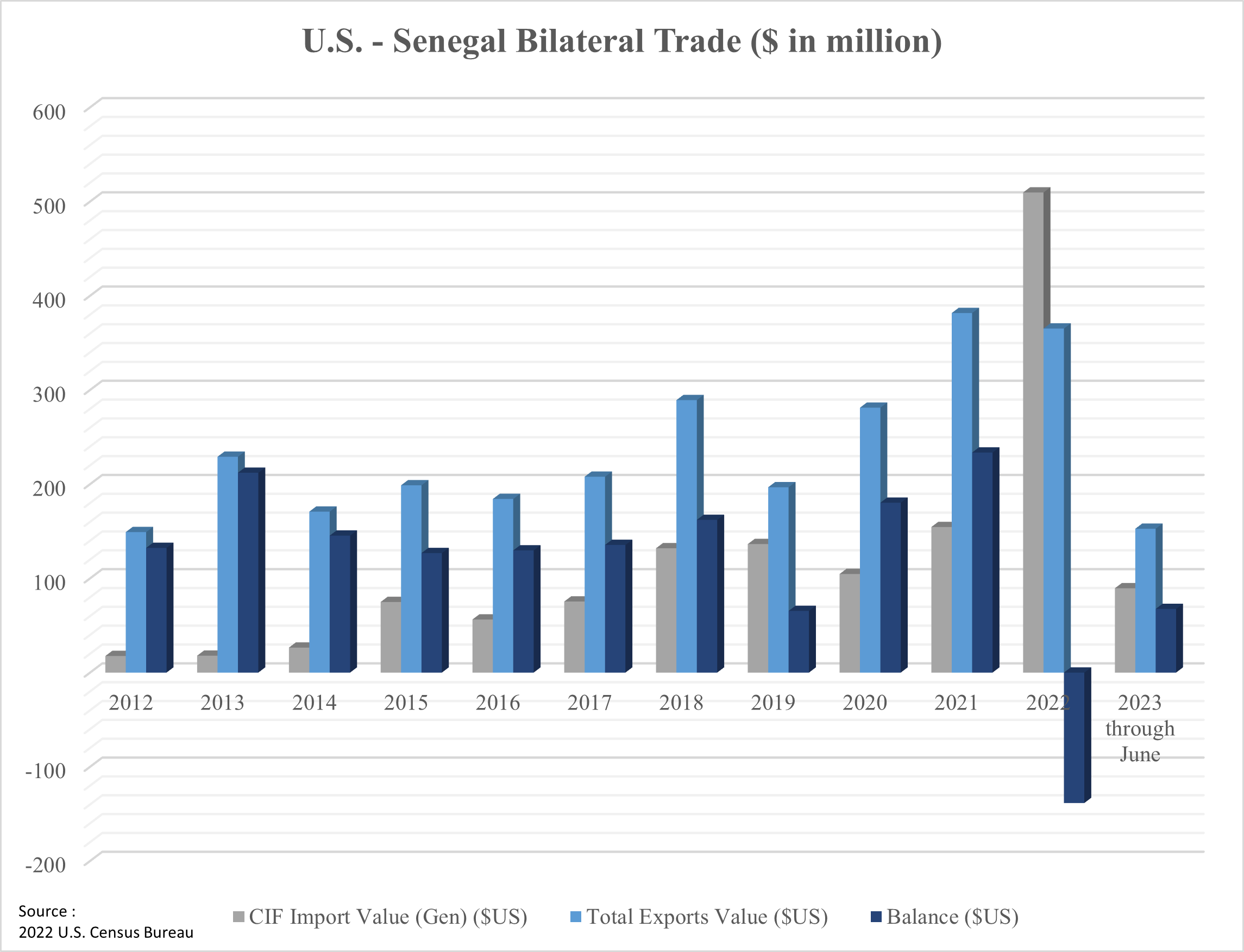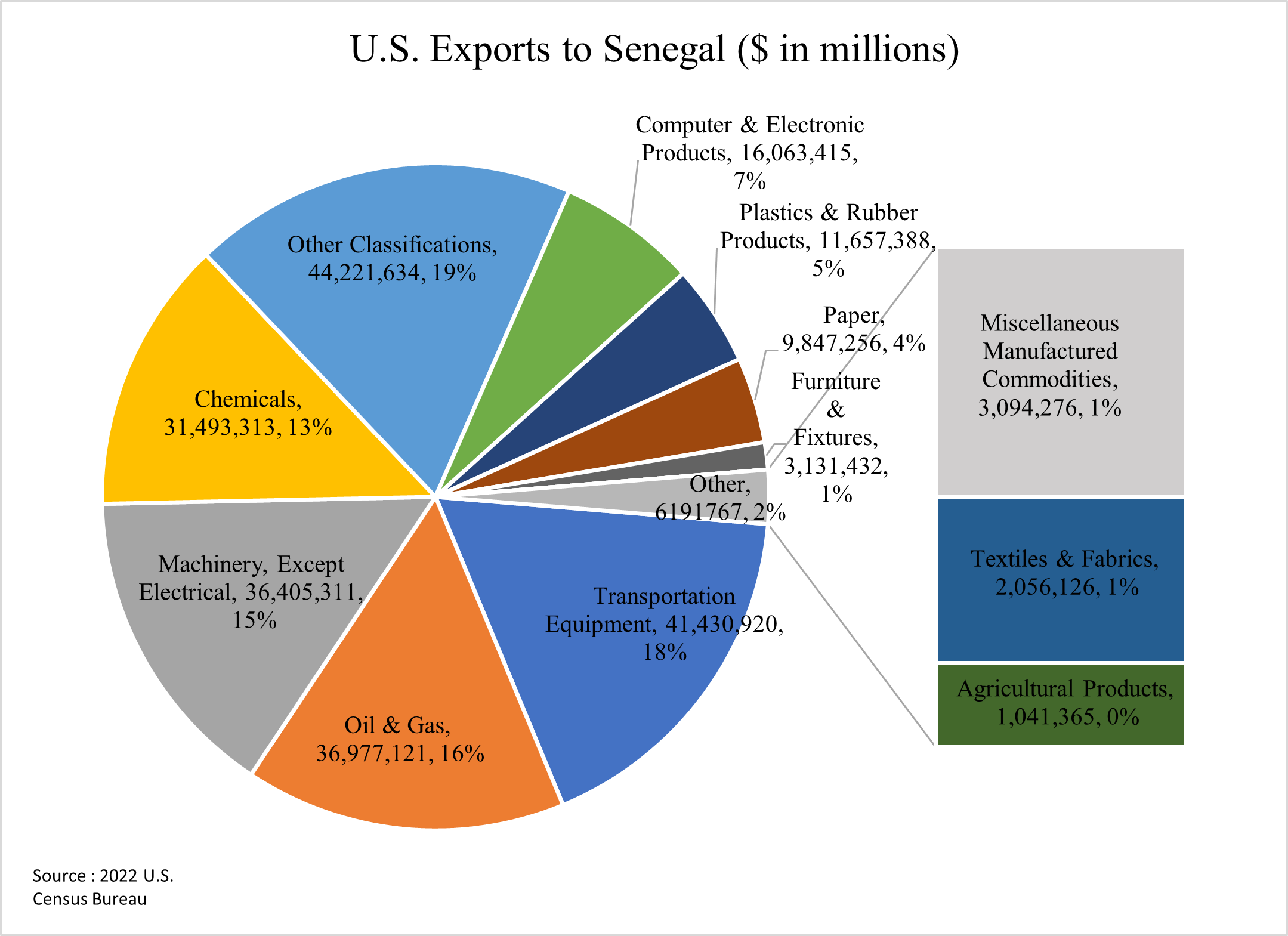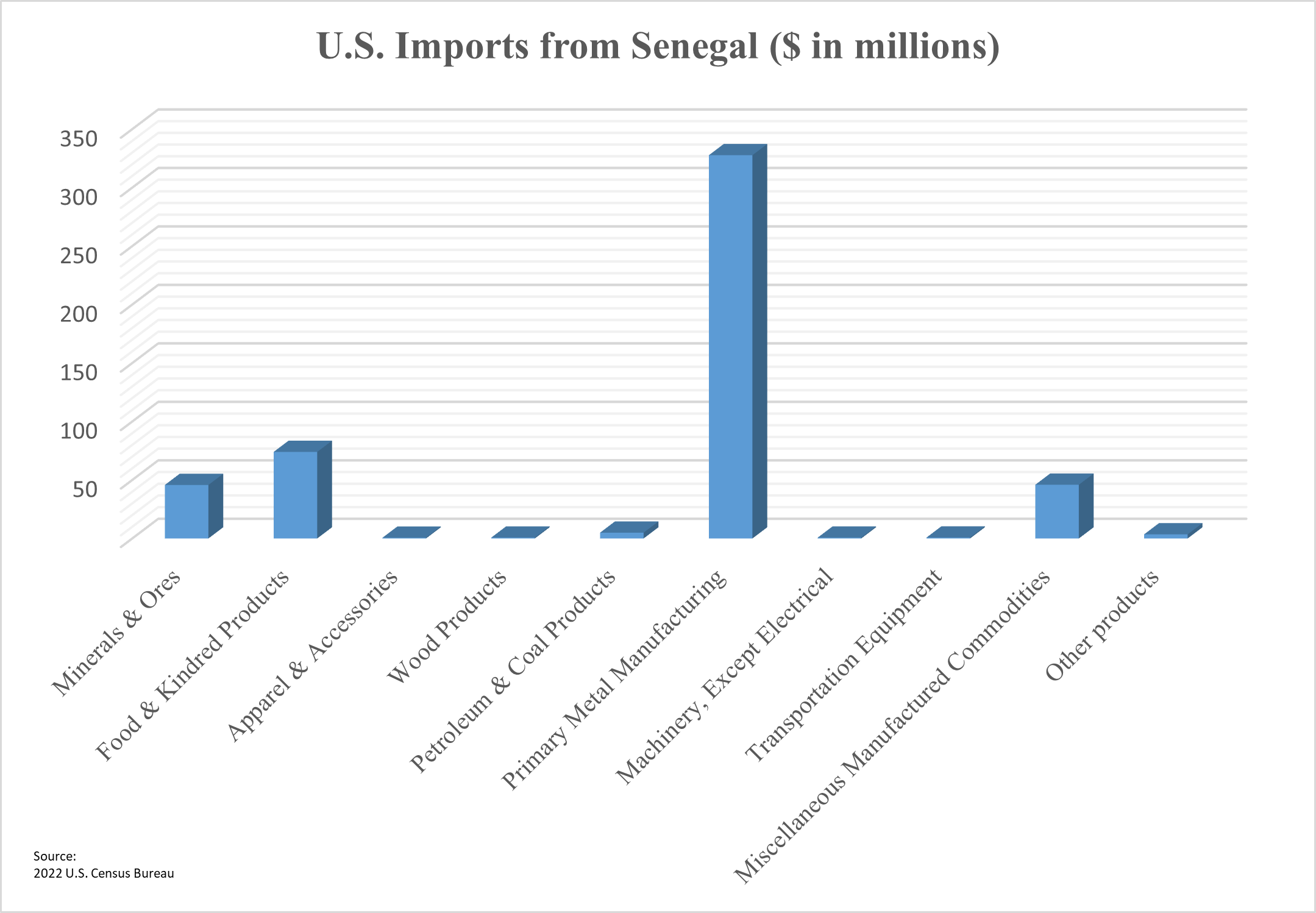Total U.S-Senegalese bilateral trade has increased over the past 10 years. The United States generally runs a trade surplus with Senegal, with U.S. exports ranging from $197 million to $365 million between 2019 and 2022. According to U.S. Census Bureau data, in 2022 the United States exported $365 million worth of goods to Senegal, an increase of 86% percent from 2019; imports of goods from Senegal were $510 million, an increase of 273.53% percent during the same period. As of June 2023, the U.S. had a $138 million trade deficit with Senegal. [1] As shown in the chart below, the top five U.S. exports to Senegal in 2022 were other products (32 percent), transportation equipment (24 percent), oil and gas (18 percent), used or secondhand merchandise (15 percent), and chemicals (11 percent). Within the category other products, the major exports were machinery, except electrical, other products, other special classification, computer and electronic products, plastics and rubber products and fabricated metal products. The top five imports from Senegal were food and kindred products (38 percent), miscellaneous commodities (28 percent), minerals and ores (24 percent), chemicals (6 percent), and others (4 percent).
Senegal is a beneficiary of the U.S. African Growth and Opportunity Act and remains AGOA eligible. The products that Senegal exports under AGOA include: animal products (cows, meat, leather and skins), oilseed products (sesame, groundnuts, nuts and sheer butter, cashew nuts), horticultural products (mangoes, onions), cereals, mining products, handicraft products, cotton, textile products and clothing. Cotton, textile products and mining products are making the bulk of exports towards the United States. Mining products represented 65 percent of all U.S. exports under AGOA in 2021. Cotton, textile products represented 35 percent.
The framework agreement with the Economic Community of West African States (ECOWAS), of which Senegal is a member. According to ECOWAS, total trade within the ECOWAS region averages $760 billion. Senegal has signed and ratified the African Continental Free Trade Area (AfCFTA), which entered into force on May 30, 2019. The AfCFTA is the largest free trade pact after the World Trade Organization and promises to cover over 1.2 billion people with more than $3 million in Gross Domestic Product (GDP).
In recent years, Senegal has become a hub of Foreign Direct Investment (FDI) in West Africa. In 2020, FDI totaled $1,846 million. In 2022, the FDI totaled $2,586 million[2]. This represents a 40 percent increase between 2020 and 2022. Since 2014, FDI inflows have been linked to the Emerging Senegal Plan for the development of infrastructure, electricity, agriculture, drinking water, and health. France is historically Senegal’s largest source of foreign direct investment, but China has also become a significant foreign investment partner. Other important investment partners include the United Kingdom, France, Germany, China, Morocco, Turkey, and the Gulf States.
[1] U.S. 2022 Census Bureau data
[2] https://unctad.org/publication/world-investment-report-2023


